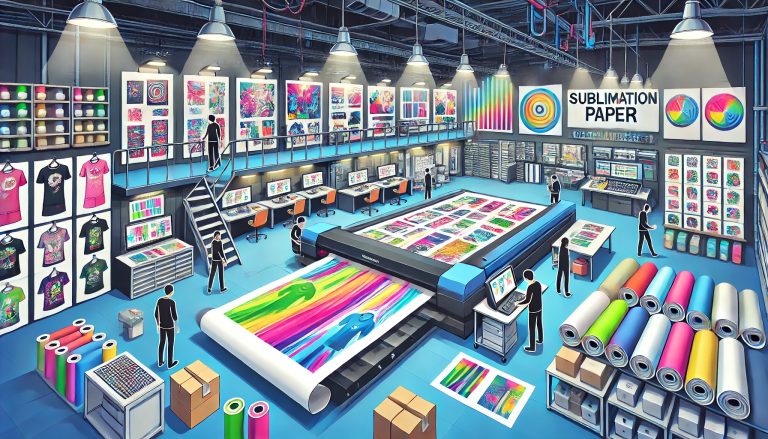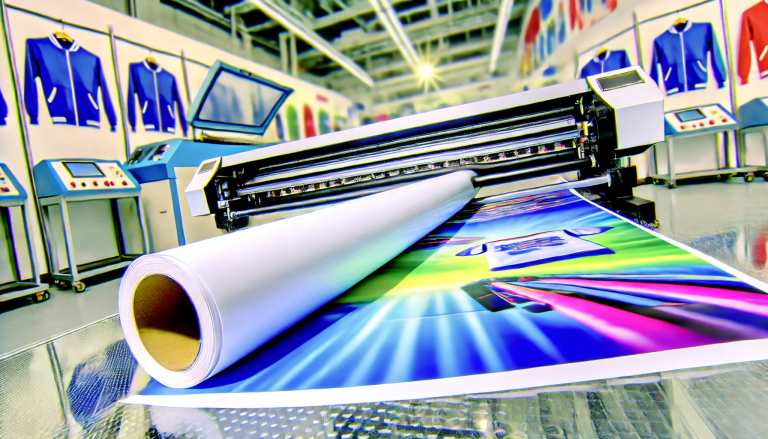Sublimation on transfer paper is a topic that intertwines the realms of digital printing and heat transfer techniques, merging the capabilities of modern technology with traditional fabric printing methods. This article aims to explore the concept of sublimation on transfer paper, its process, the types of materials required, its applications, and the considerations one must take into account to achieve the best results.
Understanding Sublimation
Sublimation is a digital printing process that involves transferring a design from specially coated paper to a variety of materials, including fabrics and hard surfaces, using heat and pressure. The key aspect of sublimation is the transition of the dye from a solid directly to a gas without passing through a liquid phase, enabling the dye to bond with the fibers of the material at a molecular level. This results in high-resolution and durable prints that are resistant to washing and friction.
The Role of Transfer Paper in Sublimation
Transfer paper plays a crucial role in the sublimation process. It is specially coated to hold and release the dye when heated. There are primarily two types of sublimation transfer papers: those designed for use with hard surfaces and those intended for fabric applications. The choice between these types depends on the substrate material and the desired outcome. The transfer paper must be compatible with sublimation inks, which are designed to vaporize under heat and pressure.
The Sublimation Process
The process of sublimating on transfer paper involves several steps:
- Design Creation: The first step is creating or selecting a design and printing it on sublimation transfer paper using sublimation inks. It’s important to note that the design is mirrored before printing to ensure it appears correctly on the substrate.
- Preparation: The material or object to be printed on is prepared. For fabrics, this typically means ensuring they are made of polyester or a polyester blend, as sublimation ink can only bond with polyester fibers effectively.
- Heat Press: The printed transfer paper is then placed on the substrate, and both are put into a heat press. The combination of heat and pressure causes the sublimation ink to convert into a gas and permeate the material’s surface, bonding with it permanently.
- Cooling and Peeling: After pressing, the material is removed and allowed to cool. The transfer paper is then peeled away, revealing the vibrant, high-quality print beneath.
Applications
Sublimation on transfer paper has a wide range of applications, from creating custom apparel and textiles to producing personalized mugs, coasters, and phone cases. Its versatility and the quality of the print make it a popular choice for both businesses and hobbyists alike.
Considerations for Successful Sublimation
For successful sublimation on transfer paper, several factors need to be considered:
- Material Compatibility: The substrate must be compatible with sublimation ink. For fabrics, this means they must have a high polyester content. Hard surfaces need to be coated with a special polymer coating.
- Quality of Supplies: The quality of both the sublimation ink and transfer paper can significantly affect the outcome. High-quality supplies ensure better transfer and more vibrant colors.
- Equipment: A reliable heat press is crucial for consistent results. The temperature, pressure, and time settings must be precisely controlled according to the substrate and ink specifications.
- Environment: Humidity and temperature can affect the sublimation process. A controlled environment can help prevent issues like color shifting or incomplete transfers.
Conclusion
Sublimation on transfer paper is a transformative printing method that combines technology with creativity to produce vibrant, durable prints on a variety of substrates. While the process may seem straightforward, success requires attention to detail, from the design phase through to the final heat press. By understanding the materials, process, and critical considerations involved, anyone can harness the power of sublimation to create personalized items with professional-quality results.




